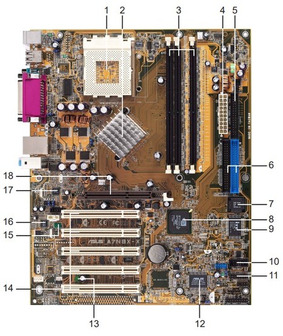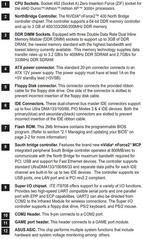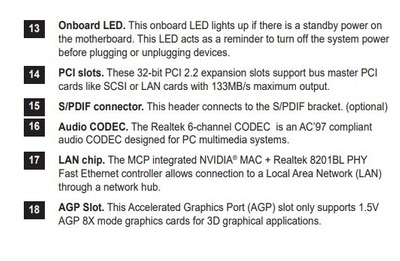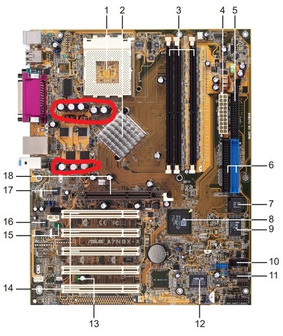First post, by Sly_Botts
- Rank
- Member
Greetings and Salutations!
I recently re-obtained my old motherboard from my in-laws. They've finally decided to stop using that old Athlon XP 2800+ system.
Anyway here is my issue. I noticed that the capacitors around the CPU socket were all bulging and some had leaked. I cleaned some of it up first and tested the motherboard to make sure it was still working. Sure enough, everything was workihg great, however I knew I had to replace those caps. The board had some green/gold coloured caps that were 3300UF 6.3V so I ordered:
Caps:
Panasonic CAP, 3300UF, 6.3V, ALU ELEC, RADIAL;
Capacitance:3300F;
Voltage(DC):6.3V;
Capacitance Tolerance:ñ 20%;
Capacitor Terminals:PC Pin;
Lifetime @ Temperature:10000 hours @ 105øC;
Polarity:Polar;
Capacitor Case / Package:Radial Leaded
I will attach the layout and highlight the caps I replaced.
Anyway, after a successful recap I decided to remove the Northbridge heatsink, clean it and put new paste there. Once this was done I started up my system only to get beep error codes for RAM not being inserted properly. I switched from 2 chips to one and noted that the 3rd lone RAM slot is now the only slot that is working properly. If I add any RAM to slot 1/2 the system will not post and give me the RAM error code.
QUERY
Is it possible I damaged the memory controller on the Northbridge chip by applying too much force to remove the heat sink? Or can the Capacitors be doing this somehow? (I'm thinking not).
The Motherboard is an ASUS A7N8X-X. Socket A (462) .
It is possible to commit no errors and still lose. That is not a weakness, that is life.



